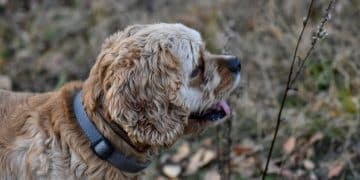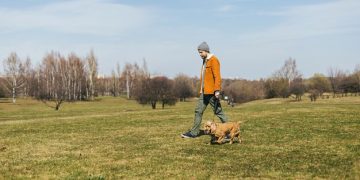Loose-Leash Walking: Revolutionary Technique for Stress-Free Dog Walks
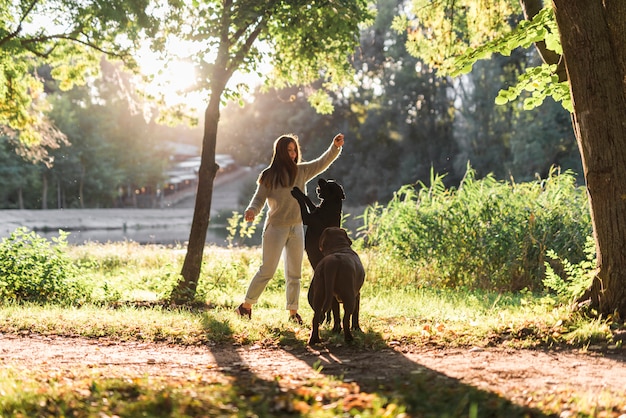
Anúncios
Loose-leash walking is a transformative dog training technique that eliminates pulling, making walks enjoyable and stress-free for both you and your canine companion by focusing on positive reinforcement and clear communication, fostering a harmonious partnership during outings.
Tired of your arm being pulled off during dog walks? Discover the loose-leash walking revolution, a simple yet effective technique to transform stressful outings into enjoyable strolls with your furry friend.
Anúncios
Understanding the Loose-Leash Walking Philosophy
The core philosophy behind loose-leash walking revolves around creating a positive and cooperative experience for both you and your dog. It’s not about dominance or forceful control, but rather about fostering a connection based on mutual respect and understanding. When applied correctly, it will make your dog enjoy your time together more than ever.
This technique emphasizes clear communication, rewarding desired behaviors, and building a strong bond. Forget about yanking or harsh corrections; it’s all about teaching your dog that walking nicely beside you is the most rewarding option.
Anúncios
- Positive Reinforcement: The cornerstone of loose-leash walking is rewarding your dog for walking calmly by your side. This encourages them to repeat the desired behavior.
- Clear Communication: Use consistent cues and body language to communicate your expectations to your dog. Avoid mixed signals that can confuse them.
- Patience and Consistency: Mastering loose-leash walking takes time and dedication. Be patient with your dog and maintain consistency in your training approach.
By embracing this philosophy, you’re not just training your dog to walk nicely; you’re building a stronger, more fulfilling relationship with them. It’s about creating a partnership where both of you enjoy the experience of exploring the world together.
Essential Equipment for Success
Having the right tools can significantly impact your success in teaching loose-leash walking. While the technique itself is paramount, certain equipment choices can make the process smoother and more effective. It’s essential to choose tools that are comfortable and safe for your dog so he won’t be distracted by the equipment itself.
Choosing well fitted equipment will help aid in communication and positive reinforcement. Below are a couple of options that might work well for you and your dog:
Choosing the Right Leash
A standard 4-6 foot leash is ideal for loose-leash walking. Avoid retractable leashes, as they encourage pulling and make it difficult to maintain consistent communication with your dog.
Selecting a Comfortable Collar or Harness
A flat collar or a well-fitting harness are both suitable options. Harnesses that clip in the front can discourage pulling, but it ultimately depends on your dog’s individual needs and preferences.
- Treat Pouch: A treat pouch worn around your waist or clipped to your leash allows quick and easy access to rewards.
- High-Value Treats: Use small, tasty treats that your dog finds irresistible to motivate them during training.
- Clicker (Optional): A clicker can be used as a marker to pinpoint the exact moment your dog performs the desired behavior.
Investing in quality equipment is an investment in your dog’s training and well-being. By having the right tools, you’ll set yourself up for success from the very beginning.
Step-by-Step Guide to Loose-Leash Walking
Now, let’s dive into the practical steps of teaching your dog to walk nicely on a loose leash. Remember, patience and consistency are key. It’s also important that you pick an area, like your backyard or a nearby park, that doesn’t have a lot of other stimuli so your dog can stay focused on you.
Follow these steps below and it’ll be only a matter of time before your dog walks so nicely by you you’ll forget what it was like to have your arm pulled off.
Starting Indoors
Begin by practicing loose-leash walking indoors. Attach the leash to your dog’s collar or harness and walk around the house. Reward them with treats for staying close to you with a loose leash.
Introducing Movement
Once your dog understands the concept indoors, move to a quiet outdoor area. Start walking slowly and reward your dog for maintaining a loose leash.
- Change of Direction: If your dog starts to pull, stop walking immediately. Wait for them to release the tension on the leash, then change direction and reward them for following you.
- Luring with Treats: Use treats to lure your dog into the desired position beside you. Hold the treat near your leg and reward them for walking alongside you.
- Verbal Cues: Use a consistent verbal cue, such as “easy” or “walk nicely,” to signal your expectations to your dog.
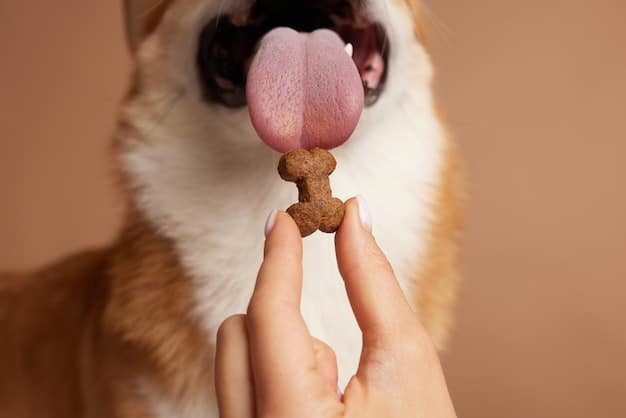
These techniques may seem simple, but their repetition will make all the difference and will add up to a much better experience for you and your dog.
Troubleshooting Common Challenges
Even with consistent training, you may encounter challenges along the way. It’s important to understand that setbacks are normal and to have strategies for addressing them. Knowing some of the reasons your dog might be having difficulty will help reduce frustration too. It might be that you need to go back a step or two and work on the skill a little more before moving on to new ones.
Here are some common obstacles and how to overcome them:
Pulling Towards Distractions
If your dog pulls towards distractions like other dogs or people, try to anticipate these situations and redirect their attention before they start pulling. Use high-value treats or a favorite toy to keep them focused on you.
Excitement and Overstimulation
Some dogs get overly excited during walks, making it difficult to maintain a loose leash. In these cases, try incorporating calming exercises into your routine, such as deep breathing or gentle massage.
- Inconsistent Reinforcement: Make sure you’re consistently rewarding your dog for walking nicely on a loose leash. Inconsistency can confuse them and hinder their progress.
- Lack of Patience: Training takes time and patience. Avoid getting frustrated with your dog and focus on celebrating small victories.
- Environmental Factors: Be mindful of the environment in which you’re training. Avoid overwhelming your dog with too many distractions, especially in the early stages of training.
By addressing these challenges with persistence and understanding, you’ll be well on your way to mastering loose-leash walking with your furry friend.
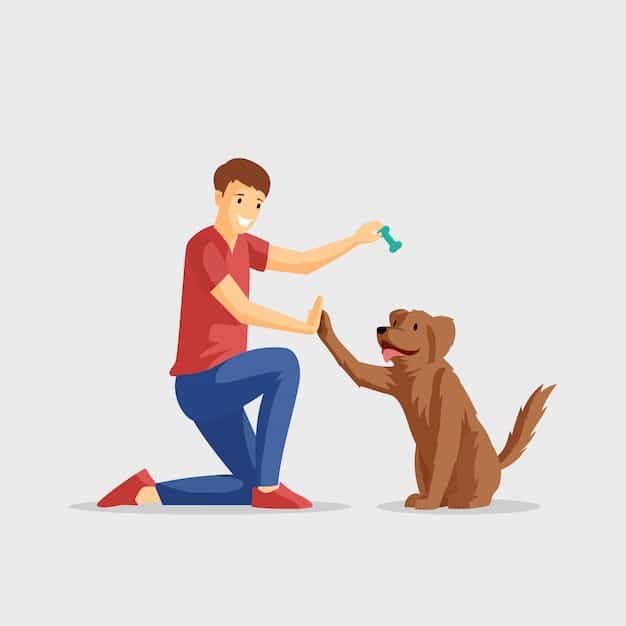
Advanced Techniques and Tips
Once your dog has mastered the basics of loose-leash walking, you can start incorporating advanced techniques and tips to further refine their skills. Remember, the goal is to continually challenge your dog and keep them engaged in the training process. It is important that the techniques are done positively, and not as punishment.
Here are some strategies for taking your loose-leash walking to the next level:
Varying Your Route
Introduce your dog to new and different walking routes to expose them to a variety of sights, sounds, and smells. This will help them generalize their loose-leash walking skills to different environments.
Adding Obstacles
Incorporate obstacles into your walks, such as walking around trees or stepping over logs. This will challenge your dog’s focus and coordination, making them an even better walking companion.
- Heel Position: Teach your dog to walk in a specific heel position beside you. This can be useful in crowded areas or when you need to keep your dog close.
- Impulse Control: Practice impulse control exercises, such as waiting at doorways or leaving dropped food, to further enhance your dog’s self-control during walks.
- Off-Leash Freedom: Once you’re confident in your dog’s loose-leash walking skills, consider allowing them off-leash in safe and legal areas. This will give them the opportunity to explore and exercise their independence while still maintaining good behavior.
By incorporating these advanced techniques and tips, you’ll not only improve your dog’s walking skills but also strengthen your bond and create a more enriching experience for both of you.
Maintaining Long-Term Success
Maintaining long-term success in loose-leash walking requires ongoing effort and commitment. It’s not a one-time fix but rather a continuous process of reinforcement and refinement. So even if your dog walks perfectly for years, it’s important to be on the lookout for when they start falling back into old habits again so you can correct immediately.
Follow these strategies to ensure your dog remains a well-behaved walking companion:
Regular Practice
Continue to practice loose-leash walking regularly, even after your dog has mastered the basics. Consistent reinforcement will help solidify their skills and prevent them from reverting to old habits.
Addressing Setbacks
Be prepared to address occasional setbacks. If your dog starts pulling or exhibiting unwanted behaviors, calmly redirect them and reinforce the desired behavior.
- Stay Positive: Maintain a positive attitude and focus on rewarding your dog for good behavior. Avoid getting frustrated or resorting to punishment.
- Seek Professional Help: If you’re struggling to maintain loose-leash walking, don’t hesitate to seek guidance from a certified dog trainer or behaviorist.
- Enjoy the Journey: Remember that loose-leash walking is not just about having a well-behaved dog; it’s about building a stronger, more fulfilling relationship with your furry friend. Enjoy the journey and celebrate the progress you make along the way.
The key to maintaining long-term success in any training program or behavior comes down to consistency and positivity. By following these strategies, you can continue to make your dog a happy and successful part of your family.
| Key Point | Brief Description |
|---|---|
| 🐾 Positive Reinforcement | Rewarding good behavior is key to effective training. |
| 🚶 Consistency Matters | Regular practice reinforces desired walking habits. |
| ✅ Correct Equipment | The right leash and harness enhance training success. |
| 🔄 Address Setbacks | Calmly correct pulling to maintain good walking habits. |
Frequently Asked Questions
▼
Loose-leash walking means your dog walks beside or near you without pulling on the leash, maintaining a relaxed and comfortable posture for both of you, turning walks into pleasant experiences.
▼
Start as early as possible. Puppies can begin learning basic leash manners as soon as they’re comfortable wearing a collar or harness, usually around 8-10 weeks old, focusing on positive reinforcement.
▼
Training time varies based on factors like age, breed, and training consistency. Some dogs may learn in weeks, while others need months. Stay patient, positive, and consistent.
▼
Start training in quieter environments with fewer distractions. Use high-value treats to keep their attention, and gradually introduce more distracting settings as they progress.
▼
Loose-leash walking ensures walks are enjoyable and safe, prevents strain-related injuries for both the dog and owner, and promotes better behavior in public, enhancing your bond.
Conclusion
The loose-leash walking revolution offers a happier and healthier relationship with your dog. By prioritizing communication, patience, and positive reinforcement, you and your canine friend can enjoy walks that work together. The journey offers plenty of rewards as your dog learns the ropes.



